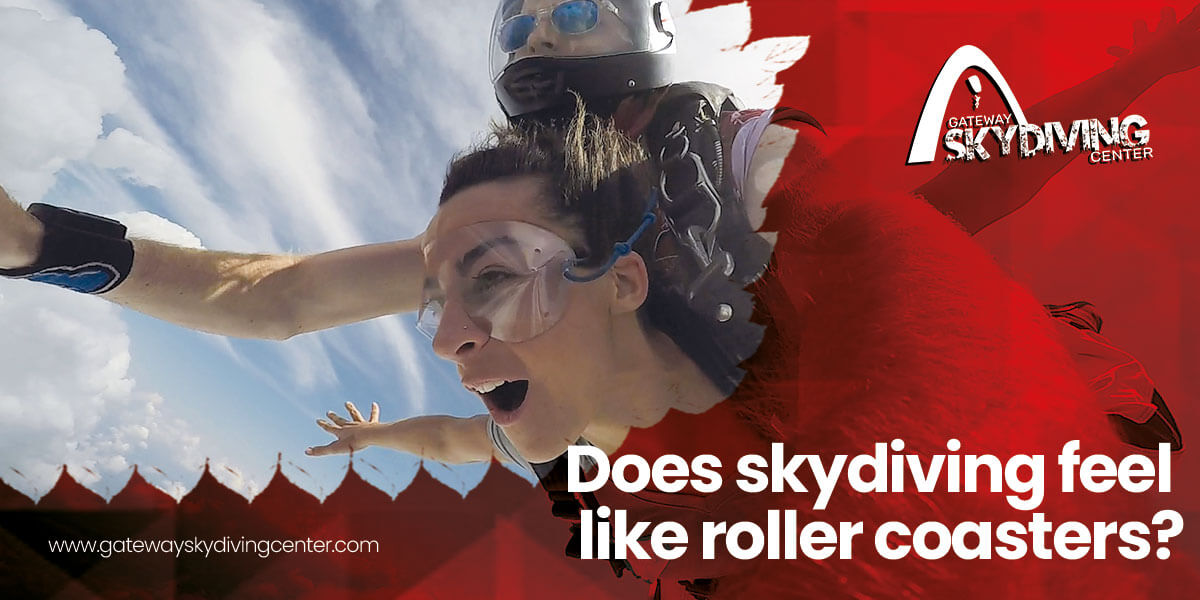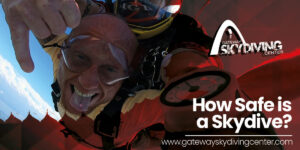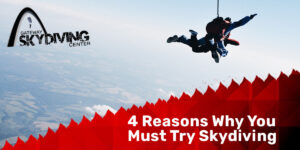Typically not. Skydiving is a thrill like no other, but most skydivers don’t experience the “stomach drop” sensation found on many roller coasters, because of the high wind-speeds experienced when exiting a plane.
Forces on body when jumping in sky
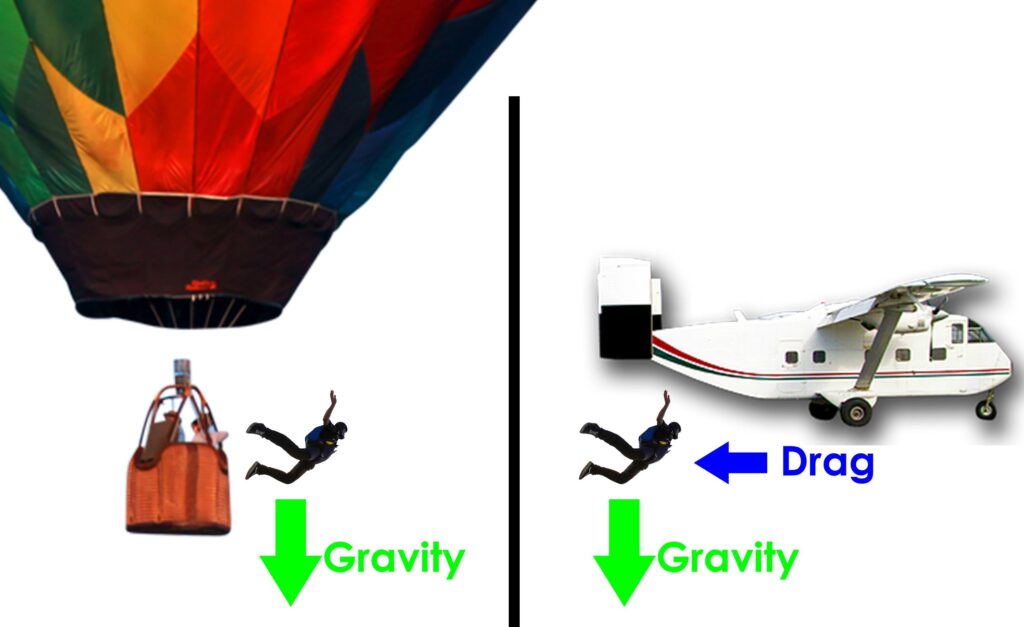
The picture on the left.
When you jump from an unmoving object you can feel your guts floating inside of you for the first few seconds. Since gravity acts on your body evenly your organs are not pressed into your skin. This feeling stops once you reach terminal velocity.
The picture on the right.
When you jump from a plane you experience wind resistance. This causes a drag force that presses on your skin from the moment you exit the aircraft. As this drag slows your horizontal velocity your internal organs press against the inside of your skin and ribcage, eliminating the “floating guts” sensation. This is the reason why jumping from a moving plane while skydiving doesn’t cause vomiting.
Terminal Velocity
It’s a result of our atmosphere (Air). When you start to fall, the force of gravity speeds you up, but the air is making a drag force in the opposite direction. The faster you go, the stronger the drag. Terminal velocity is the speed when drag force perfectly cancels out the gravity force, so you don’t speed up any further. That speed, for the human body, is around 120 mph.
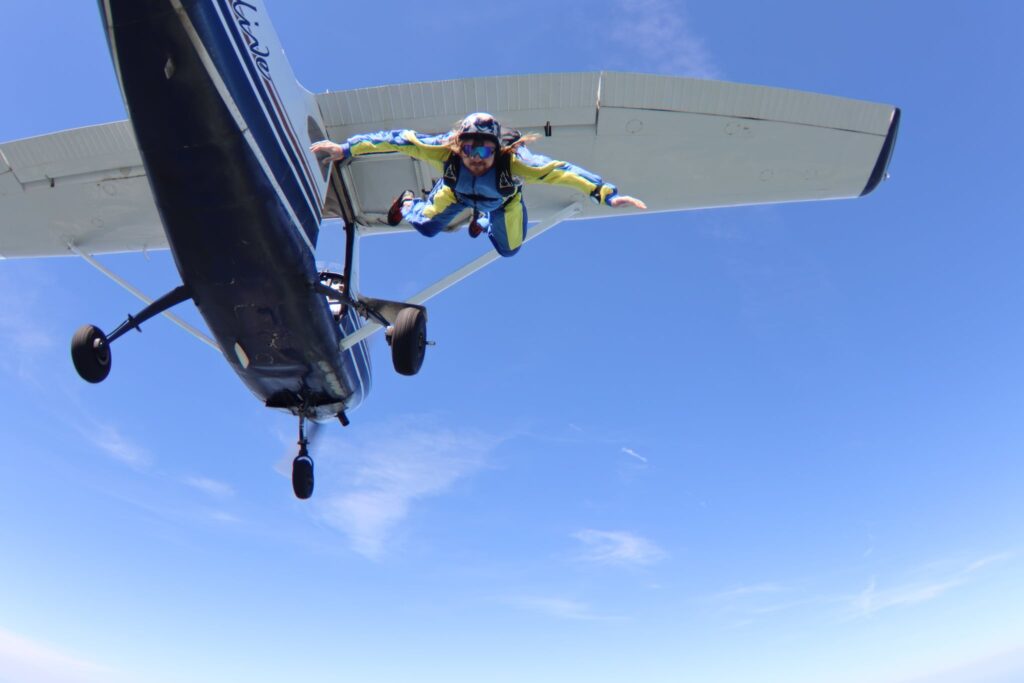
Body position while skydiving
Skydivers first learn to fall belly first into the wind.
- Falling belly first results in a more reliable deployment of the parachute, worn on the back.
- The airflow when exiting the aircraft comes from ahead.
Arching and extending the legs slightly results in better belly-first control; and relaxing the rest of the body results in smooth, on-heading fall.
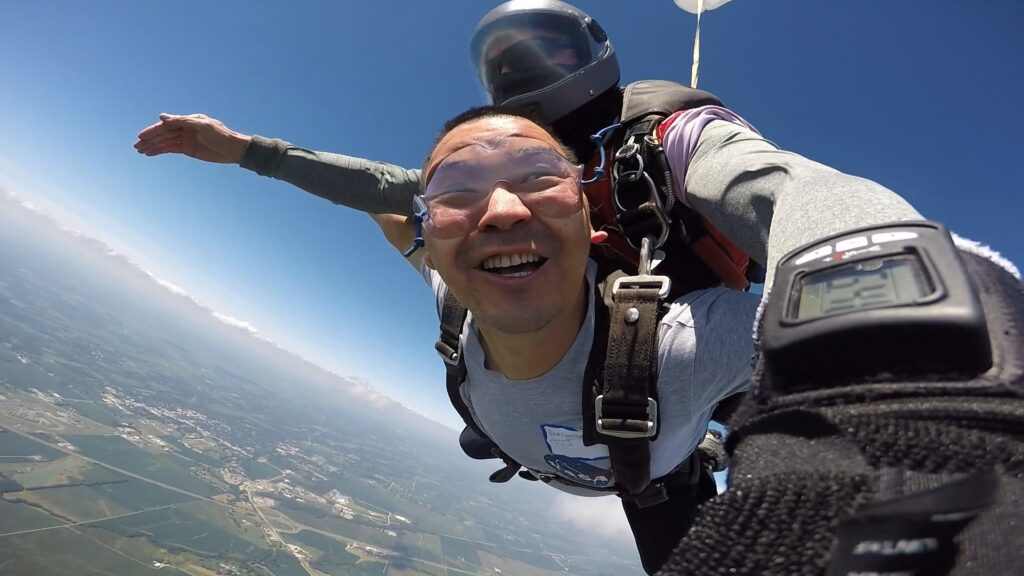
- hips forward with back arched
- knees at shoulder width
- legs extended slightly, knees bent 45 degrees, toes pointed
- upper arms positioned 90 degrees or less from the torso and relaxed
- elbows bent 90-120 degrees, up, and relaxed
- head up
Learn more about skydiving here.

